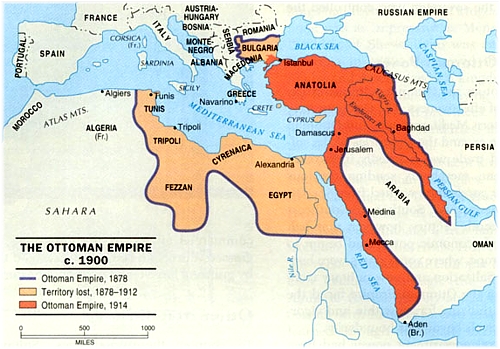However, that is not really the point of this article because this person was talking about “cabaret style Belly Dance”. I believe that we can agree that this type of Belly Dance originated in around the late 1800’s give or take a decade or two.
I would assume that we now know that this form of dance was never considered traditional in style, but a dance complete with costuming that was suited to please the latest batch of conquerors which consisted mainly of French and British. This was the result of the fall of the Ottoman Empire.
What really got to me was her reasoning and I quote. “Everyone knows Egypt is over 5000 years old so obviously belly dance began in Egypt, because Lebanon didn’t exist”. Maybe it is because I feel more and more desperate to preserve what is left of the Asian Arab culture, but each and every part of the world has existed in one form or another since the beginning of time, regardless of what the region was called back then and we are no different.
Please do not think I am attacking the person. Actually, I do not blame the lady for her statement. I would blame myself, though, if I allow this kind of information to be accepted without any thought given to the possibility that it is not entirely accurate.
So to all of you Belly dance experts out there: Belly Dance describes a particular style of dance which most agree began in the Arab speaking world, including Egypt and Lebanon, as well as many other regions then defined as the Near East. This area stretched all the way from modern Morocco to Iraq (and sometimes Iran, even though the people there are Aryan).
The Ottoman Empire controlled much of the Near East and much of Turkish culture . For example, dances such as the Black Sea folk dances influenced today’s Debke (Asian Arab folk dance). There was also a traditional style of belly dance that each region claimed as their own by music, dress, song, and movement.

This is where the history of Cabaret Belly Dance began and everything about the dance then and now is predominately “The French Connection.”
Since visual art has no political borders, it is only natural that Europeans became enamored by the mysterious beauty that the Arab world had to offer. Belly Dance became one of the more popular forms of entertainment when the French invaded North Africa and Lebanon . The unique style of Belly Dance left those in Western and European countries in awe of the feminine sensuality of the dance.
The British, in my opinion, back then were kind of rigid, prim, and formal. In general, the British and their monarch style of Parliamentary Democracy lacked that French pizazz.
 All really cool decadent visual arts came from mainland Europe and the French were the leaders where cabarets featuring the “Can Can” and other dances flourished in every French controlled region. It stands to reason then that the cabarets as well as their scandalous costuming ideas probably existed in North Africa (except Egypt) including present day Lebanon well before the first nightclub ever opened in Cairo.
All really cool decadent visual arts came from mainland Europe and the French were the leaders where cabarets featuring the “Can Can” and other dances flourished in every French controlled region. It stands to reason then that the cabarets as well as their scandalous costuming ideas probably existed in North Africa (except Egypt) including present day Lebanon well before the first nightclub ever opened in Cairo. Remember that the cabaret style of Belly Dance itself was considered a western cultural event and the night clubs of those days were only there to entertain invaders and their families, not the local people.
I will acknowledge however, that in those days, the sun never set on Great Britain and that they were definitely great warriors: thus becoming a dominant force and influence on the countries they colonized. They did nationalize dance, theatre, and just about everything else in Egypt based upon their Westernized viewpoint; thus Egypt became and continues to remain " the Hollywood of the Arab film industry." I also believe that the many wars in the Asian Arab world have also contributed to the downfall of the Belly Dance commercial industry, especially in Lebanon until the mid 1990s.
Finally, the Asian Arab world is making a comeback and if all goes well; our part of the Arab culture will not disappear after all and we will again be recognized for our grand contribution in of all the arts.
I have written this article for the purpose of questioning and assimilating information in order to arrive at a conclusion that is a bit more cohesive and understandable in it’s historical and political climate. I hope this helps to reeducate and reevaluate the normal everyday acceptance dancers have assumed about the roots of the dance known widely as Belly Dance. The background of our dance culture here in Western society may not understand or have the basic knowledge of these historical as well as cultural and regional affects that are the foundation to Belly Dance. They have understandingly arrived at knowledge based on miscellaneous events and have created and copied information regarding the roots, culture and historical variance of "Belly Dance" based on these long made assumptions. By writing this article I hope to open new dialogue and a broader understanding of the Arab/Asian dance foundations. 







The Arabic Stories you will find on our website do not adhere to the canon of what is thought to be politically correct to say.
ReplyDelete